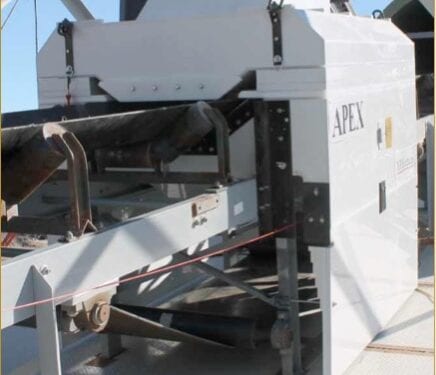Achieves Exceptional Phase 1 Ore Sorting Results
Nova Minerals Limited (ASX: NVA)has recorded exceptional preliminary bulk and particle ore sorting test work undertaken on geological samples from the 3.3Moz Korbel Main gold deposit, Estelle Gold Project in Alaska.
Bulk ore sorting alone demonstrated a 25% upgrade of 0.25g/t feed grade with a sorter reject waste grade of 0.06g/t.
Bulk and Particle ore sorting systems combined created a high-grade stream of feed taken from mined material and upgraded to 6g/t. This high-grade stream would be directed to a conventional CIL or CIP plant with the remaining lower grade material directed to the heap leach for gold extraction.
NVA CEO, Mr. Christopher Gerteisen commented:
“The Korbel Main deposit continues to amaze us. It is shaping up to be world-class in terms of the resource endowment, but also in other key technical aspects such as being at surface, its exceptional metallurgical properties, including gold recovery confirmed that ore sorting presents a real and future prospect to gain higher operational efficiencies as we progress through our economic assessment work.
“Minimising mine dilution and mineral loss is key as we continue through our economic assessment. Now, with ore sorting, we have the potential to add further value as material processing through bulk and particle ore sorting can be diverted into streams of high grade through a CIL circuit and the remaining material diverted to the heap leach, with minimal material lost to waste.
“Nova is an ideal position to achieve our goal of progressing Korbel Main to production whilst concurrently unlocking the Estelle gold district. By implementing our dual exploration and development strategy, we will seek to maximise our ability to create value for shareholders through both resource growth and project development.”
Brent Hilscher, one of the world’s leading experts in ore sorting technology and gold extraction, stated:
“The Estelle project has excellent gold heterogeneity. There is a substantial portion of the deposit’s gold contained in surprisingly high-grade rock. Even better news is that Nova and ABH Engineering have developed for Estelle, methods for bulk sorting by PGNAA and particle sorting by dual energy XRT. By combining bulk and particle sorting technologies we have shown we can take mined material and produce a separate ore stream grading 6g/t and it can be done for a reasonable CAPEX and OPEX.”
Ore Sorting Background
Various forms of ore sorting are increasingly used in many commercial mines throughout the world and in operation on large scale (Figure 3), including manganese, iron ore, nickel, phosphate, uranium, coal and gold mines. Australian companies either carrying out test work or using ore sorting in their mines includes: Newcrest, Evolution, Northern Star, St Barbara, KCGM, Saracen, Westgold and Resolute.
Ore sorting is typically the separation of a target mineralogy, ore or element from waste. These technologies can be separated into two categories: particle sorters and bulk sorters. Ore sorting can be:
- Accurate with high recovery
- High tonnage
- mature and proven technology
- Key to removing variability in plant feed
Ore sorting can create additional value in the mining and processing functions, potentially including:
- increase in deposit exploitation and life of mine
- decrease in mining costs
- efficient preconditioning of ore providing reliable ore availability
- decrease in haul costs
- increases in production
- reduced energy costs and water consumption
- reduced tailings requirements
- • saleable coarse waste product Ore sorting aims to reject the baren portion of the mined mass prior to the haulage, crushing and processing stages.












